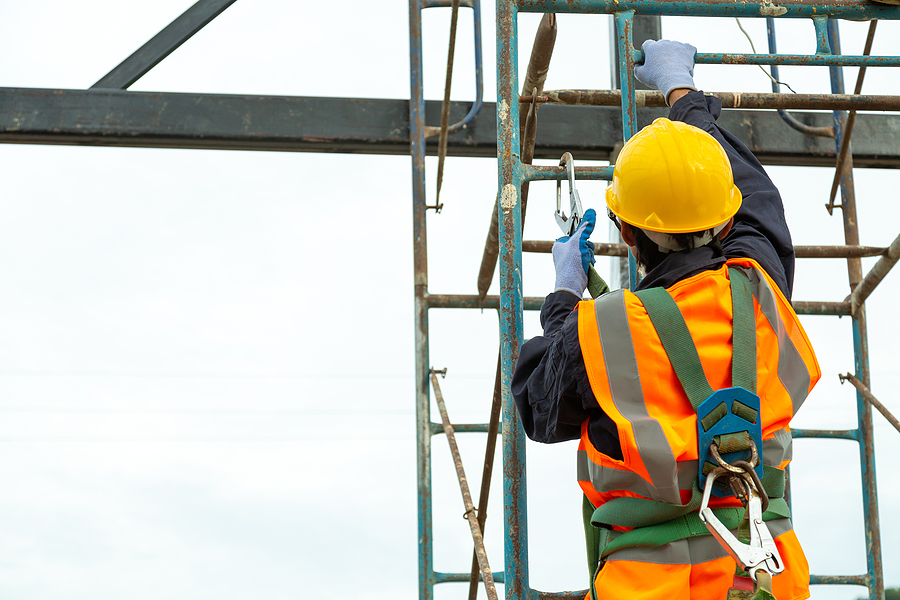Do You Need Fall Protection Competent Person Training?

For any work at height on a U.S. site, a fall protection “Competent Person” is a vital team member never far from the work being done.
According to the U.S. Occupational Safety and Health Administration, OSHA, a Competent Person is one who is capable of identifying existing and predictable hazards in the surroundings or working conditions which are unsanitary, hazardous, or dangerous to employees, and who has authorization to take prompt corrective measures to eliminate them.
That is why the role of Competent Persons is critical to establishing and maintaining a safe worksite.
An Overview of Fall Protection Competent Person Training
In certain industries, like construction and utilities, where the heights vary, there is a lot of information on the fall protection Competent Person training, which is very essential.
Real safety training courses should expose students to the principles of fall arrest, recognize fall hazards and break down fall prevention best practices. These programs aim to develop an individual who not only understands fall protection but is also able to teach and ensure safety compliance.
Competent Person Training is federally mandated by OSHA for general industry (1910.30) and construction (1926.503) elevated worksites. Additionally, the ANSI and ASSP require a compliant Comprehensive Managed Fall Protection Program to include a fully trained and employer authorized Competent Person.
What Is Fall Protection Competent Person Training?
Competent Person training is essential for construction professionals in these roles:
- Foreman
- Manager
- Supervisor
- Carpenter
- Scaffold erector
- Steelworker
Depending on the extremes to which tower climbers and technicians are subjected, they require fall protection Competent Person training (plus rescue training) just to work safely at height.
The Critical Importance of Competent Person Training in Fall Protection
A Competent Person must be present on-site to supervise fall protection systems and practices, including their design, implementation, and use, as per OSHA guidelines.
As such, they are responsible for identifying hazards, correcting them, and enforcing applicable standards. This training will help someone meet both of these criterion, and can assist an organization in meeting OSHA standards to avoid fines as well as shutdowns due to violations.
It also enables workers to avoid risk, check worksite conditions, and take safety measures to protect them from falls and promote a safety culture.
Breakdown of the Program’s Training Components
It also assists participants with all aspects of dealing with fall protection systems. A training course covers:
- Theoretical Aspects
- Learn the rules and standards
- Recognizing workplace fall hazards
- Fall protection fundamentals, including system and equipment types
Practical Aspects:
- Developing and implementing a job site’s fall protection plan
- Wearing and choosing fall protection equipment including a safety harness or self-retracting lifeline (SRL)
- Equipment inspection and maintenance
- Conducted fall scenarios and rescue operations practice
- Conducting rescue plans and emergency procedures
OSHA Regulations and Compliance Standards
OSHA does not specify how often or what a Competent Person should be trained on. Employers are required to give some type of safety training, usually a two-hour “authorized person” course, to workers for heights of six feet or more for construction and four feet or more for general industry.
ANSI also establishes standards such as the Z359 Fall Protection Code that governs fall protection equipment usage. Employers need to be aware of state-specific rules and ensure that employees are trained properly on all equipment.
Benefits of Fall Protection Competent Person Training
Every year, countless lives and money are lost to fall-related injuries, and employers risk losing workers (and subsequently losing potential millions due to lawsuits).
It shows workers that identifying and eliminating fall hazards, resulting in a safer work environment with fewer injuries. This lowered risk increases morale and promotes proactive safety.
Training also helps cut costs by reducing workers’ compensation claims, medical expenses and lost workdays. Having a good safety record can also result in lower insurance premiums and a reduction in liability.
Better trained employees lead to higher productivity, and reduced downtime from correctly installing fall protection systems. The data collected in this way helps organizations escape fines and punishments in accordance with the security norms.
Choosing a Fall Protection Training Provider
Select a suitable fall protection training method. Look for these key elements:
Instructional curriculum on fall prevention, equipment use (e.g., fall arrest device) and rescue procedures in accordance with OSHA and ideally, ANSI standards
- Knowledgeable instructors
- Tailored to the specific needs of your organization
- Qualification to be deemed Competent Person through assessment and certification
- Good testimonials
Your decision should be based on the factors of flexibility, cost and hands-on practice. The best choice would be clinic based training as the students will be learning and getting hands-on experience with instant feedback from instructors. On-site learning, on the other hand, is costlier and may involve logistical challenges for several employees. This online training is convenient but the learning process does not work practically as practical medication is needed to get competency. Join an online course: Refresh your knowledge after on-site learning
Frequently Asked Questions about Fall Protection Competent Person Training
1) How long are fall protection Competent Person training courses?
Typically, an entire training course is two days long, with eight hours of training on each day. A refresher course runs for one eight-hour day.
2) What are the costs of a fall protection Competent Person training course?
Cost of training varies based on the provider, duration, and location. Two-day classes can run anywhere from $600 to $1,400. Advanced courses are more expensive, particularly those with hands-on training or personalized content.
3) How are you certified?
To receive your certification as a Competent Person, you will need to take the training program, pass a written exam and demonstrate hands-on skills for fall prevention.
4) Does the certification have a renewal requirement?
ANSI also recommends that renewals are done every two years. While OSHA does not specifically require retraining, it has provisions for general industry (1910.30) and construction (1926.503) retraining.
Final Thoughts
Safety training for fall protection is essential within these high risk fields. Credible training courses will educate workers to recognize fall hazards, properly utilize fall protection equipment, and effectively respond to an emergency.
Training also prepares companies to comply with laws, prevent accidents and save money on medical expenses, insurance premiums and lost productivity.
Safe worksite means happy worksite, which also means productive worksite.
